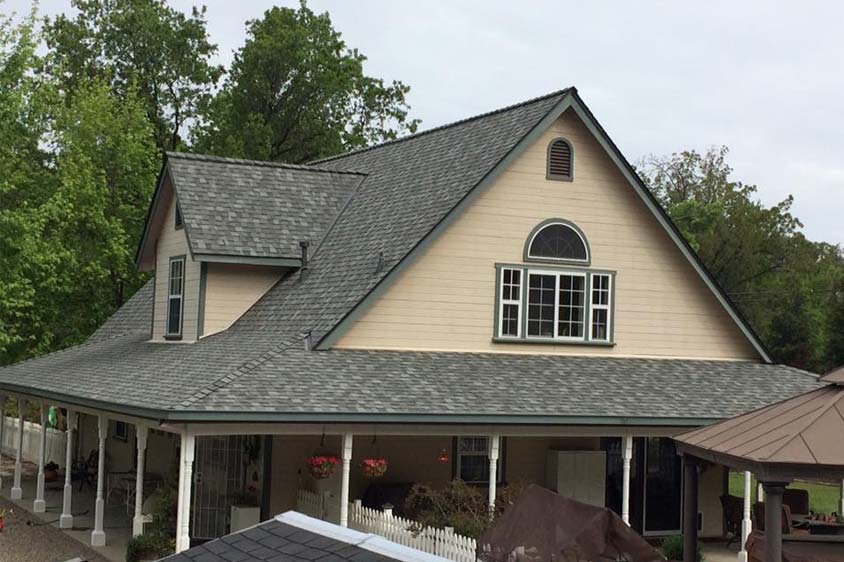Your roof’s pitch is its slope, or a measurement of how steep it is. Roof pitch is expressed with two numbers that indicate how much it rises over a 12-inch span. So, a 5:12 roof rises 5 inches every 12 inches of run.
Roof pitch measurements can help you determine which shingles are best for your roof, if your roof can accommodate a green roof, and much more. If you’re wondering, here is how to measure your roof pitch.
How to Measure Roof Pitch
- You need to choose where to access the roof to make your measurement. The attic and a gable end are both good choices. If you’re outside the home, you’ll need a ladder.
- Take a measuring tape a measure out 12 inches from the edge of the roof. Be sure this line is level. Mark the 12 inch spot with a pencil.
- From the 12 inch spot, measure the vertical distance up to the top of the roof (or the underside of the roof if you’re in the attic) but stop just below the shingles.
- If you found your height measurement was six inches, then you have a 6:12 pitch roof. Whatever your height measurement was, it makes up the first number. The second number is always 12, to indicate the horizontal or run distance.
What Does My Roof Pitch Mean?
Now that you have your roof pitch, does it tell you anything, or help you inform your decisions about your roof? It sure does.
Low Slope Roofs
If you have a slope from 2:12 to 4:12 you have a low slope roof. These roofs are more vulnerable to weather and algae growth, but are easier for your roofer to work on. If you have a low slope roof, choosing a high-quality shingle or other roofing material will be more important. It’ll also be easier to see any beautiful, premium shingles you invest in. If you want a green roof, a low slope roof can accommodate your plants easier than high sloped roofs.
High Slope Roofs
If your roof has a slope above 4:12 it is considered high pitch. Water drains from these roofs faster, they’re great for snow, and they are often more energy-efficient as they get less direct sunlight. However, they are more difficult to stand on. Roofs above 9:12 are challenging for roofers work on. Few modern homes will have a roof slope above 9:12.
Flat Roofs
If you have a roof with a slope under 2:12 it is technically a flat roof. All “flat” roofs have a small pitch to help water drain properly. These roofs cannot have shingles, as they will interfere with proper water drainage. Instead, flat roofs need asphalt membranes or other roofing materials.
Especially if you have a very low-sloped or high-sloped roof, it’s important to choose the right type of shingles to protect your home and maximize the benefits of your roof. A roofing professional can advise you as to which shingles work best for your specific roof.

